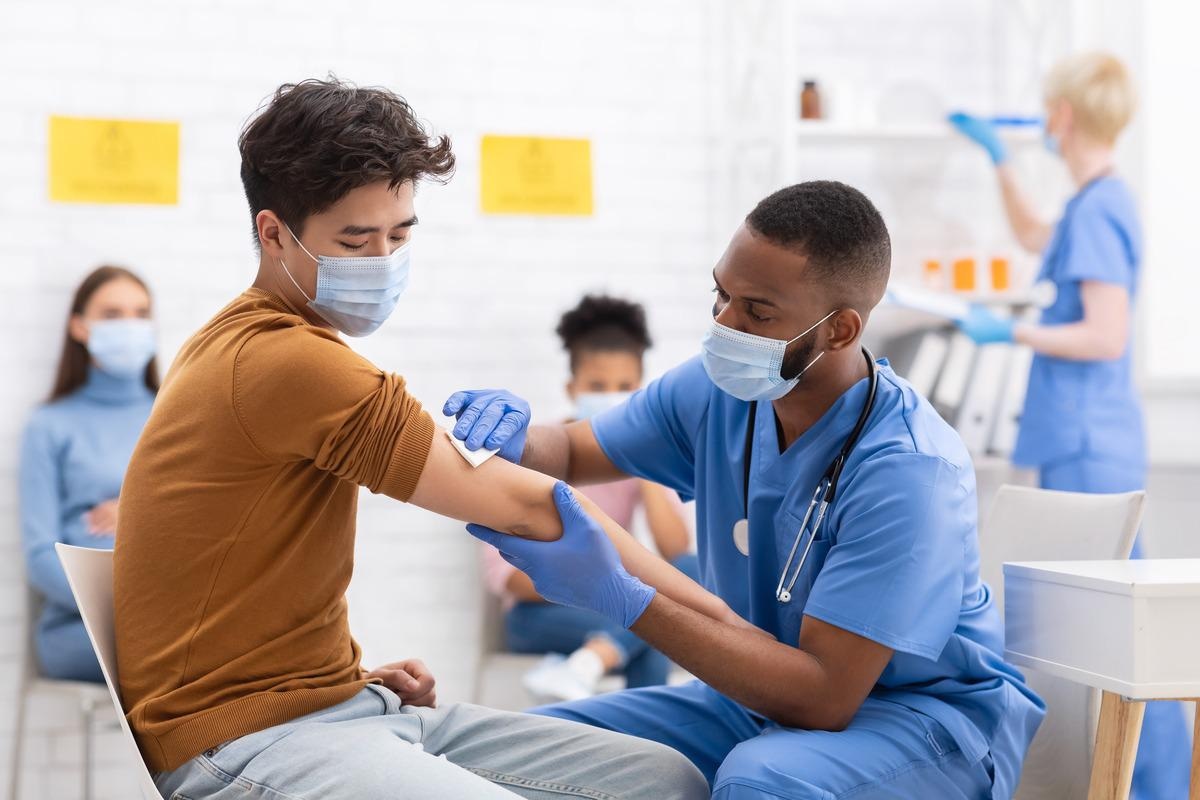By using data representing 80% of the US population, researchers have found that increased vaccination coverage against coronavirus disease 2019 (COVID-19) can be linked to a reduced incidence of cases and deaths. The study was published in the British Medical Journal (BMJ) and is freely available.
 Study: Public health impact of covid-19 vaccines in the US: observational study. Image Credit: Prostock-studio/Shutterstock
Study: Public health impact of covid-19 vaccines in the US: observational study. Image Credit: Prostock-studio/Shutterstock
Background
One year into the COVID-19 pandemic, caused by the severe acute respiratory syndrome coronavirus 2 (SARS-CoV-2), the first vaccines based on the messenger RNA (mRNA) technology were administered under emergency use authorization in December 2020.
Notwithstanding the exceptional effectiveness of vaccines in clinical trials, real-world situations may be different due to a plethora of practical challenges (such as maintaining cold chains when scaling up immunization programs, logistical challenges when carrying out mass vaccination, and accurate reporting of health outcomes).
Likewise, individual effects on disease risk and progression may also be supplemented with secondary benefits of vaccination, such as slowing the viral spread in the community and hampering onward transmission (with downstream implications for morbidity and mortality).
However, thus far, population-level data has been limited, resulting in rather restricted insights into the large-scale COVID-19 vaccine efficacy. One of the reasons is that reported cases may not always truly represent transmission rates due to notable variation in individual testing.
This recent, wide-reaching, and stringent observational study – led by researchers from the Centers for Disease Control and Prevention (CDC) in Atlanta, US – utilized national, county-level surveillance data to answer a simple question: what are the benefits of the COVID-19 vaccine in the real world?
Using big data to count cases and deaths
In this study, the number of cases and deaths has been disaggregated by county and time using the CDC’s case surveillance dataset. County COVID-19 death rates and the incidence of disease were the primary and secondary outcomes of the study, respectively.
Furthermore, the researchers have used incidence rate ratios to compare rates across vaccination coverage levels and estimated the impact of a 10% improvement in county vaccination coverage. The latter was defined as at least one dose of a COVID-19 vaccine among adults 18 years of age or older.
It has to be emphasized that the study was conducted when Alpha (B.1.1.7) and Delta (B.1.617.2) variants of SARS-CoV-2 predominated in the population. The study compared the impact of very low (0-9%), low (10-39%), medium (40-69%), and high (more than 70%) vaccination coverage levels.
Lower rates of COVID-19
The researchers have demonstrated that a 10% improvement in vaccination coverage can be linked to an 8% reduction in mortality rates due to COVID-19, as well as a 7% reduction in disease incidence – both very significant population-level percentage decreases.
The study had also found decreasing trends in deaths and case incidence when higher levels of vaccination were applied during the predominance of both Alpha and Delta SARS-CoV-2 variants. This effect did not change when different sensitivity analyses were applied, improving confidence in these findings and prediction capabilities.
Considering certain study limitations, notably unexplored additional markers of disease severity (for example, hospital admissions) and the lack of control for physical distancing, masking, or other potential confounding variables, the study results can be considered rather robust.
Considering population-level impact
Even though the study period did not cover the current predominance of the Omicron SARS-CoV-2 variant, this paper showed how reduced vaccine effectiveness and the significance of staying up to date with COVID-19 vaccinations might translate to changes in population-level vaccine impact.
Given that community benefits are rooted in individual benefits, for which vaccine effectiveness has been established in countries around the world, these data may be generalizable to other countries,” say study authors in this study published in the British Medical Journal (BMJ).
Future research may benefit from evaluating macroeconomic effects of improving population health, such as changes in employment rates and gross domestic product resulting from reopening society”, they emphasize.
The incidence drop that is going hand in hand with increasing vaccination coverage is rather consistent with ongoing surveillance data elsewhere. Hence, continuous strategic deployment of COVID-19 vaccines should be complemented with public health and social measures in the ongoing viral transmission.